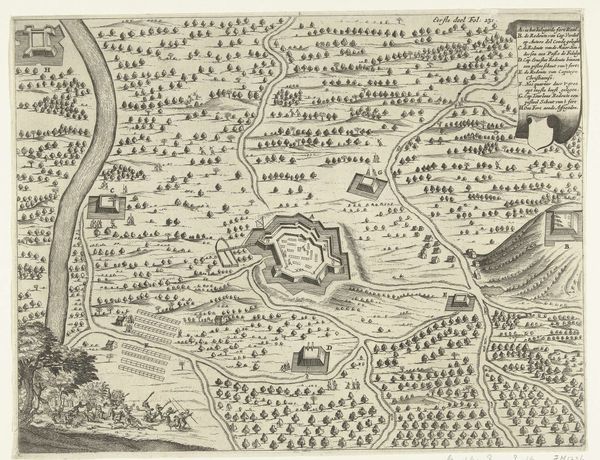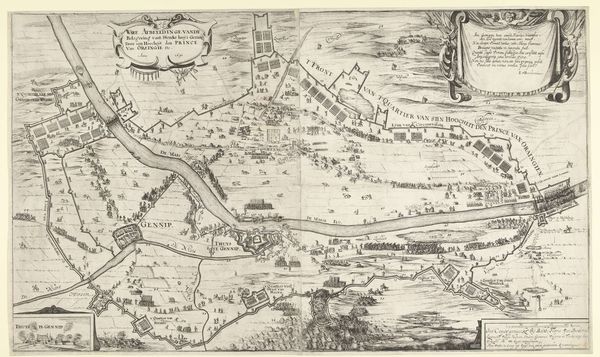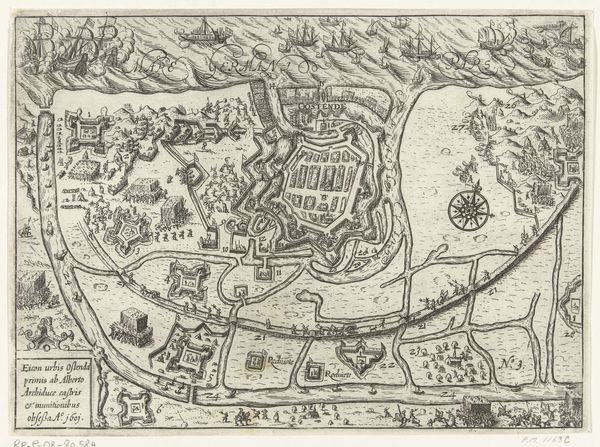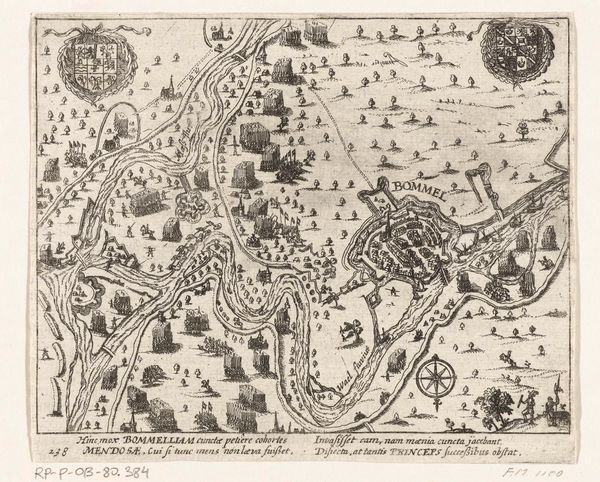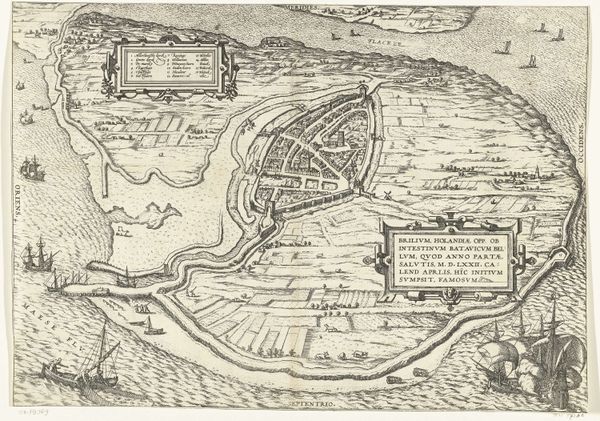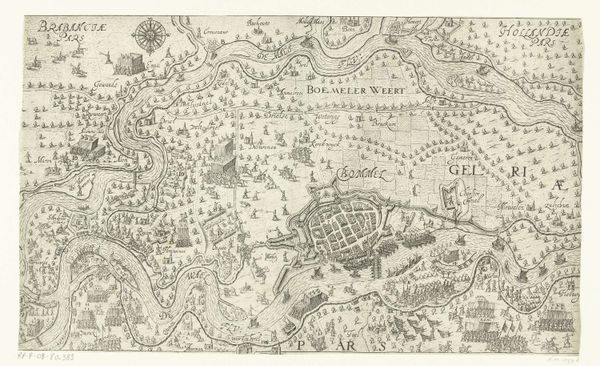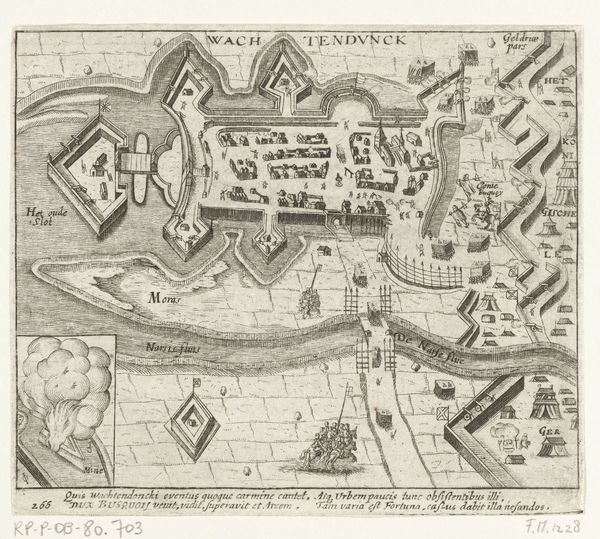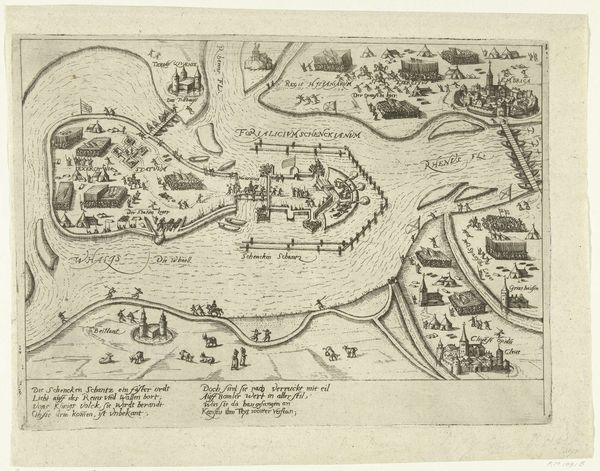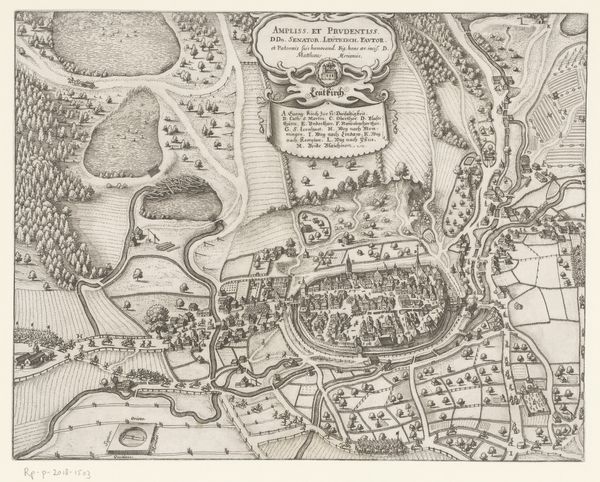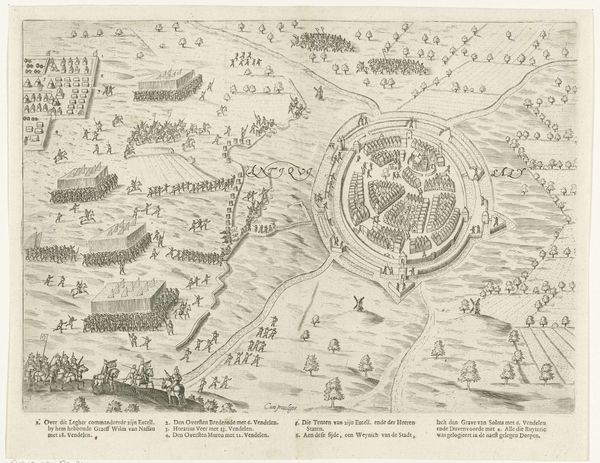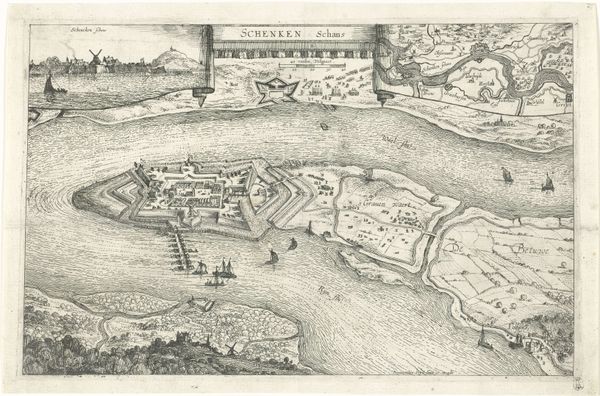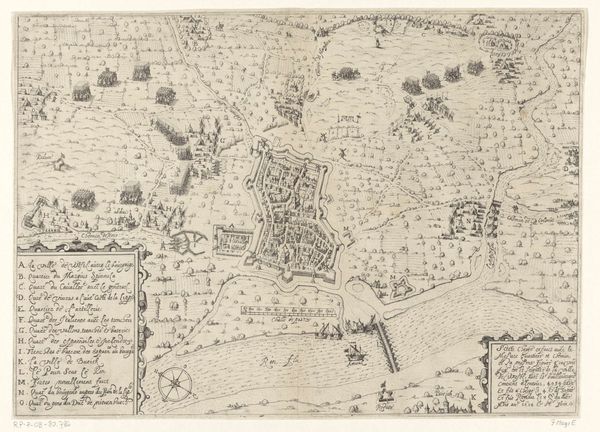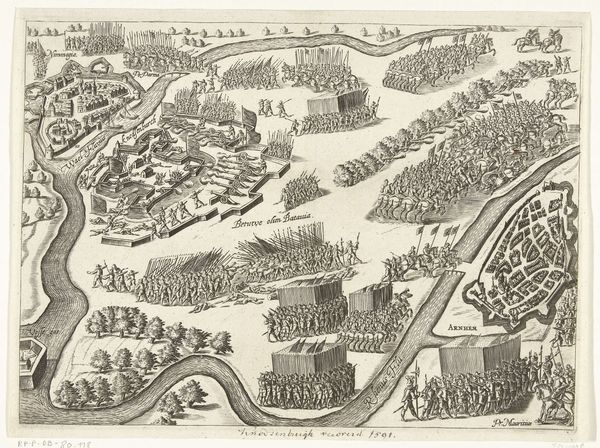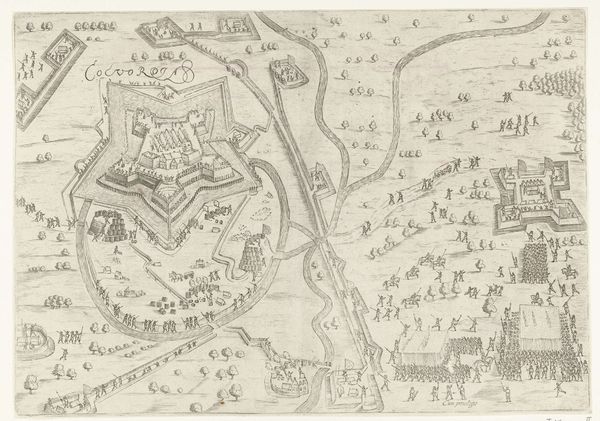
Beleg en verovering van het Fort Real in Brazilië door kolonel Artichewsky, 1635 1649 - 1651
0:00
0:00
print, engraving
#
baroque
# print
#
old engraving style
#
landscape
#
cityscape
#
history-painting
#
engraving
Dimensions: height 276 mm, width 375 mm
Copyright: Rijks Museum: Open Domain
Curator: At first glance, this feels less like a battle scene and more like a carefully ordered garden. The dense arrangement of trees creates a repetitive pattern across the landscape. Editor: Indeed. What you are seeing here is a print titled "Siege and Conquest of Fort Real in Brazil by Colonel Artichewsky, 1635." It was created between 1649 and 1651 by an anonymous artist and rendered in engraving. Curator: Engraving perfectly suits this bird's-eye perspective. The sharp lines lend a cool detachment, like surveying a strategic board game rather than witnessing human conflict. What can you tell me about the Fort? Its architecture projects a sense of impregnability, with a central redoubt surrounded by an elaborate bastioned trace. Editor: The star-shaped fort stands as a European emblem imposed upon the Brazilian landscape. Note the meticulous detailing: The print provides keys in its upper-left section. It allows the viewer to recognize named components within the vista such as “Colonel Artichewsky’s redoubt” or “the Fort where different attacks are different”. These are encoded, ready to be mapped and studied. The print isn't just documenting a siege. It's projecting a vision of European dominance and strategic power. Curator: And how subtly they convey the actual combat! There's just the briefest skirmish taking place, very subdued in the foreground in the lower-right, almost disappearing within the groves. The artist prioritized topography, using the scene more like an assertive claim over space rather than violence. Editor: I find this representation intriguing. Instead of bombastic battles, we witness the symbolic architecture of power and colonial endeavor etched carefully on the page. This image freezes a pivotal historical moment, encoding both the geographical space and the ideology that reshaped it. Curator: The symbolic layering is powerful here; more a representation of taking than of fighting, using the symbols of landscape, architecture, and war in visual concert. Editor: An assertion made meticulously, line by line.
Comments
No comments
Be the first to comment and join the conversation on the ultimate creative platform.
